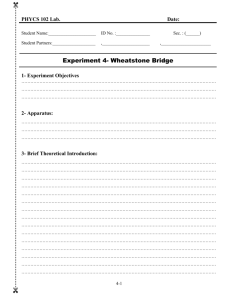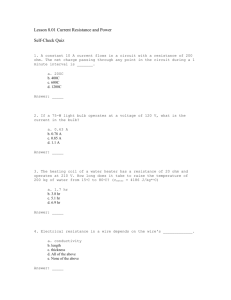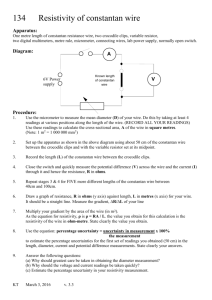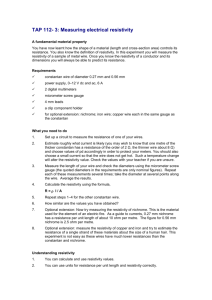Experiment To Measure The Resistivity Of A Wire
advertisement
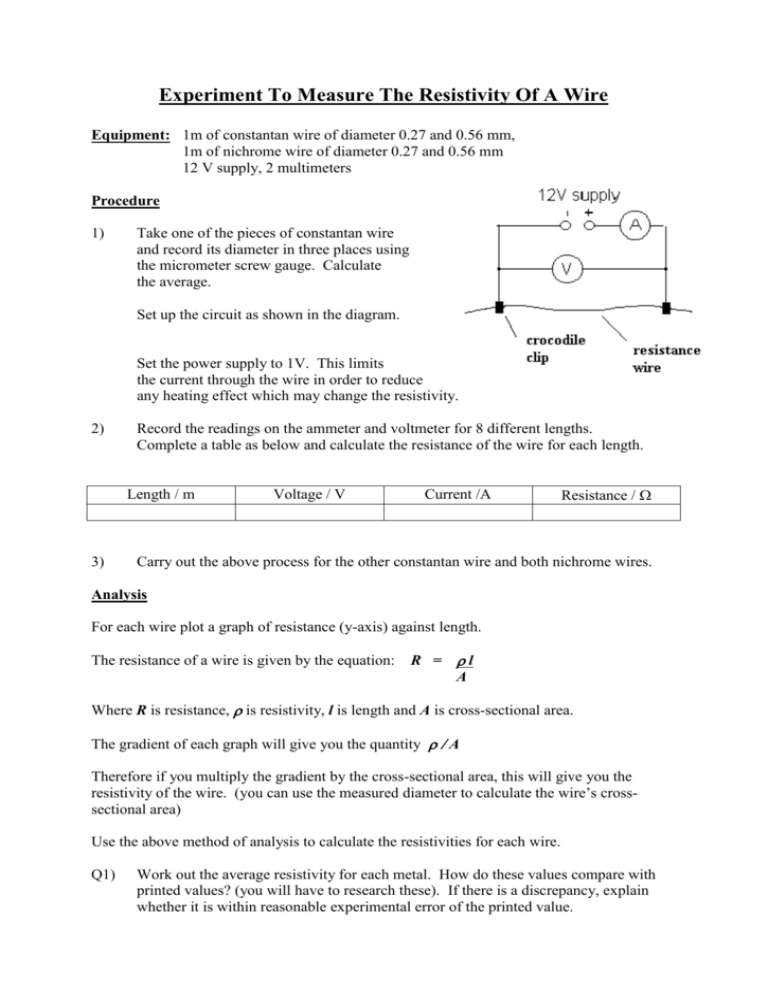
Experiment To Measure The Resistivity Of A Wire Equipment: 1m of constantan wire of diameter 0.27 and 0.56 mm, 1m of nichrome wire of diameter 0.27 and 0.56 mm 12 V supply, 2 multimeters Procedure 1) Take one of the pieces of constantan wire and record its diameter in three places using the micrometer screw gauge. Calculate the average. Set up the circuit as shown in the diagram. Set the power supply to 1V. This limits the current through the wire in order to reduce any heating effect which may change the resistivity. 2) Record the readings on the ammeter and voltmeter for 8 different lengths. Complete a table as below and calculate the resistance of the wire for each length. Length / m 3) Voltage / V Current /A Resistance / Carry out the above process for the other constantan wire and both nichrome wires. Analysis For each wire plot a graph of resistance (y-axis) against length. The resistance of a wire is given by the equation: R = l A Where R is resistance, is resistivity, l is length and A is cross-sectional area. The gradient of each graph will give you the quantity A Therefore if you multiply the gradient by the cross-sectional area, this will give you the resistivity of the wire. (you can use the measured diameter to calculate the wire’s crosssectional area) Use the above method of analysis to calculate the resistivities for each wire. Q1) Work out the average resistivity for each metal. How do these values compare with printed values? (you will have to research these). If there is a discrepancy, explain whether it is within reasonable experimental error of the printed value.


